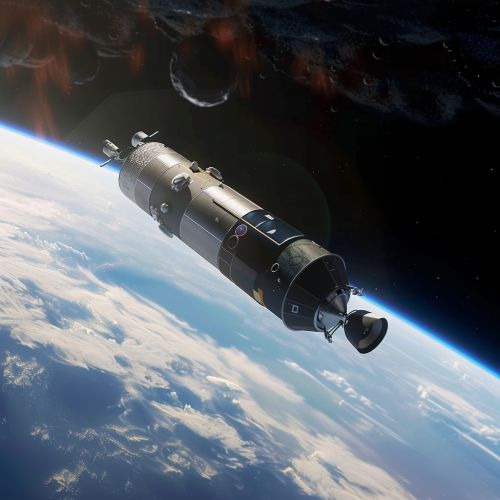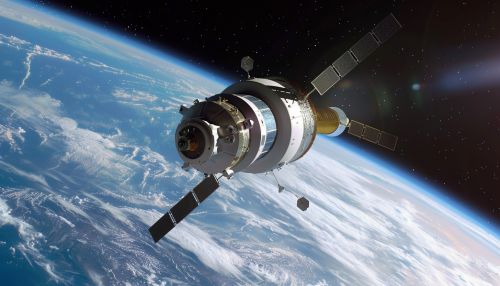Athena (spacecraft)
Introduction
The Athena spacecraft is a proposed interplanetary vehicle designed for long-duration, crewed missions to destinations beyond low Earth orbit (LEO). The concept of the Athena spacecraft was developed by a consortium of space agencies and private companies, with the aim of advancing human space exploration and fostering international cooperation in space science and technology.


Design and Development
The design and development of the Athena spacecraft began in the early 21st century, in response to the growing interest in human exploration of the Solar System. The spacecraft's design incorporates advanced technologies and systems, including a high-efficiency propulsion system, a robust life support system, and a versatile habitat module that can support a crew of up to six astronauts for extended periods.
The propulsion system of the Athena spacecraft is based on the concept of Nuclear Electric Propulsion (NEP), which uses nuclear energy to generate electricity that powers an electric propulsion system. This type of propulsion system offers a high specific impulse, which means it can provide a large amount of thrust for a given amount of propellant, making it ideal for long-duration, interplanetary missions.
The life support system of the Athena spacecraft is designed to sustain a crew for up to three years, with the capability to recycle water and air, and produce food onboard. The system incorporates advanced technologies such as Closed-loop Life Support System (CLSS), which recycles waste products and converts them into resources, and Hydroponics, a method of growing plants without soil, for food production and air purification.
The habitat module of the Athena spacecraft is designed to provide a comfortable and functional living and working environment for the crew. The module includes private quarters for each crew member, a communal area for meals and relaxation, a science laboratory for research activities, and a medical bay for health monitoring and medical emergencies.
Mission Capabilities
The Athena spacecraft is designed for a wide range of mission capabilities, from lunar and Mars missions to missions to the outer planets and their moons. The spacecraft's advanced propulsion system and robust life support system enable it to undertake long-duration, crewed missions to destinations beyond LEO.
For lunar missions, the Athena spacecraft can transport a crew to the Moon, support surface operations for up to six months, and return the crew safely to Earth. For Mars missions, the spacecraft can transport a crew to Mars, support surface operations for up to two years, and return the crew safely to Earth.
For missions to the outer planets and their moons, the Athena spacecraft can transport a crew to destinations such as Jupiter's moon Europa, Saturn's moon Titan, and Neptune's moon Triton, support surface or orbital operations for up to one year, and return the crew safely to Earth.
Future Prospects
The Athena spacecraft represents a significant step forward in human space exploration. The spacecraft's advanced technologies and systems, and its wide range of mission capabilities, have the potential to open up new frontiers in space science and exploration, and contribute to our understanding of the Solar System and the universe.
The development of the Athena spacecraft also has the potential to stimulate technological innovation, create new industries and jobs, and inspire a new generation of scientists, engineers, and explorers. As such, the Athena spacecraft is not just a vehicle for space exploration, but a vehicle for human progress and discovery.
